Flowers captivate us with their beauty, variety, and symbolism. Among the vast array of floral species, those starting with the letter “W” hold a special charm, offering a unique blend of colors, shapes, and fragrances. This compilation of 100 flowers that start with “W” takes you on a delightful journey through a diverse garden of blooms, from the well-known Water Lily and Wisteria to the exotic Waxflower and Wild Rose. Each entry is a testament to nature’s creativity, showcasing the intricate patterns and vibrant hues that make these flowers stand out. Whether you are a gardening enthusiast, a floral designer, or simply someone who appreciates the splendor of nature, this list provides inspiration and knowledge about these wonderful “W” flowers. Dive into this botanical exploration and discover the fascinating world of flowers that begin with the letter “W.”
Wahlenbergia
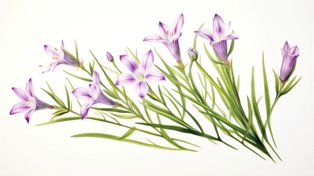
- Common Name: Bellflower
- Description: A perennial plant with bell-shaped blue or white flowers, commonly found in meadows and grasslands.
- Habitat: Prefers well-drained soils and full sun to partial shade.
- Uses: Often used in rock gardens and borders for its attractive blooms.
Wallflower

- Common Name: Erysimum
- Description: A biennial or perennial plant with vibrant, fragrant flowers in shades of yellow, orange, red, and purple.
- Habitat: Thrives in well-drained, alkaline soils and full sun.
- Uses: Popular in cottage gardens, borders, and as cut flowers.
Wand Flower

- Common Name: Gaura
- Description: A perennial with long, wand-like stems topped with delicate, white to pink flowers.
- Habitat: Prefers well-drained soil and full sun.
- Uses: Ideal for adding height and movement to garden beds and borders.
Waratah

- Common Name: Telopea
- Description: An Australian native shrub with striking red flowers and glossy green leaves.
- Habitat: Grows in well-drained, acidic soils and full sun.
- Uses: Cultivated for its unique, ornamental flowers.
Water Avens

- Common Name: Geum rivale
- Description: A herbaceous perennial with nodding, pinkish-orange flowers and serrated leaves.
- Habitat: Found in wetlands, damp meadows, and along stream banks.
- Uses: Suitable for bog gardens and naturalized areas.
Water Lily
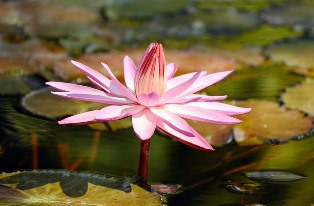
- Common Name: Nymphaea
- Description: Aquatic plants with large, floating leaves and stunning flowers in various colors.
- Habitat: Grows in still or slow-moving freshwater bodies.
- Uses: Essential for water gardens and ponds, providing shade and habitat for aquatic life.
Water Forget-Me-Not

- Common Name: Myosotis scorpioides
- Description: A low-growing aquatic plant with small, blue, star-shaped flowers.
- Habitat: Found along streams, ponds, and wet meadows.
- Uses: Ideal for pond edges and bog gardens.
Water Hawthorn

- Common Name: Aponogeton distachyos
- Description: An aquatic plant with white, vanilla-scented flowers and floating leaves.
- Habitat: Prefers cool, still, or slow-moving water.
- Uses: Grown in ponds and water gardens for its fragrant flowers.
Water Hyacinth

- Common Name: Eichhornia crassipes
- Description: A free-floating aquatic plant with glossy leaves and striking lavender-blue flowers.
- Habitat: Found in tropical and subtropical freshwater bodies.
- Uses: Cultivated for ornamental purposes but can be invasive.
Water Lettuce
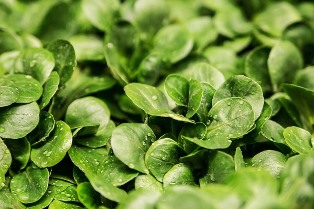
- Common Name: Pistia stratiotes
- Description: A floating aquatic plant with soft, velvety leaves resembling lettuce.
- Habitat: Grows in warm, still freshwater.
- Uses: Used in water gardens and ponds but can be invasive.
Water Soldier
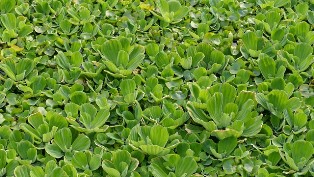
- Common Name: Stratiotes aloides
- Description: A submerged aquatic plant with spiky, rosette-forming leaves.
- Habitat: Found in slow-moving or still freshwater bodies.
- Uses: Ideal for oxygenating ponds and providing habitat for aquatic life.
Watercress

- Common Name: Nasturtium officinale
- Description: A fast-growing, aquatic or semi-aquatic plant with small, white flowers and peppery-flavored leaves.
- Habitat: Thrives in clean, flowing water.
- Uses: Commonly used in salads and as a garnish.
Watsonia

- Common Name: Bugle Lily
- Description: A clump-forming perennial with tall spikes of tubular flowers in shades of pink, red, orange, and white.
- Habitat: Prefers well-drained soil and full sun.
- Uses: Grown in borders and as cut flowers for their vibrant display.
Wax Begonia
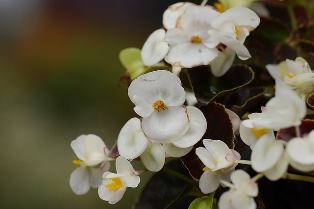
- Common Name: Begonia semperflorens
- Description: A tender perennial with waxy leaves and clusters of small, colorful flowers.
- Habitat: Thrives in well-drained soil and partial shade.
- Uses: Popular in bedding, containers, and as houseplants.
Waxflower
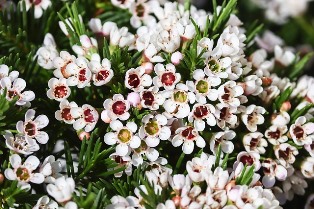
- Common Name: Chamelaucium
- Description: An evergreen shrub with needle-like leaves and small, waxy flowers in shades of white, pink, and purple.
- Habitat: Grows in well-drained soil and full sun.
- Uses: Cultivated for cut flowers and floral arrangements.
Weigela

- Common Name: Weigela florida
- Description: A deciduous shrub with arching branches and trumpet-shaped flowers in pink, red, or white.
- Habitat: Prefers well-drained soil and full sun to partial shade.
- Uses: Used in borders, hedges, and as ornamental shrubs.
Western Columbine

- Common Name: Aquilegia formosa
- Description: A perennial with nodding, red and yellow flowers and fern-like foliage.
- Habitat: Found in woodlands, meadows, and rocky slopes.
- Uses: Ideal for naturalized gardens and wildflower meadows.
Western Wallflower
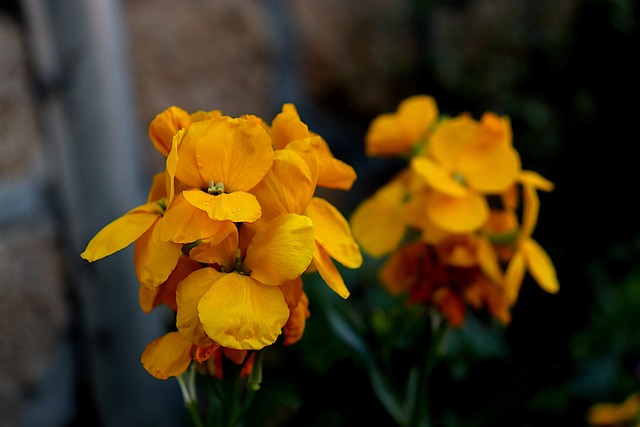
- Common Name: Erysimum capitatum
- Description: A biennial or short-lived perennial with bright yellow to orange flowers.
- Habitat: Grows in well-drained soil and full sun.
- Uses: Suitable for rock gardens and borders.
Wetherell’s Blazing Star
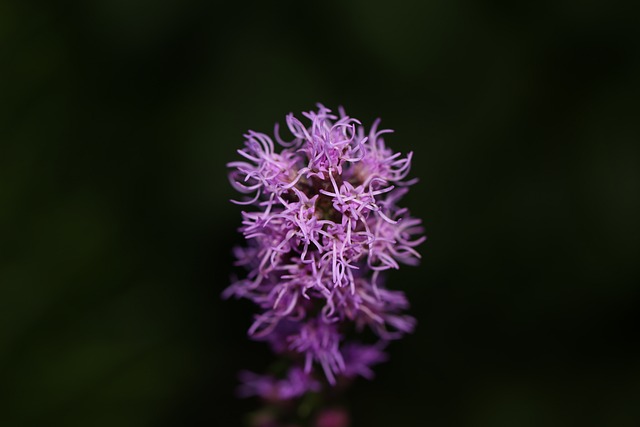
- Common Name: Liatris scariosa var. nieuwlandii
- Description: A perennial with tall spikes of purple, button-like flowers.
- Habitat: Prefers well-drained soils and full sun.
- Uses: Grown in prairie gardens and as cut flowers.
White Baneberry

- Common Name: Actaea pachypoda
- Description: A perennial with white flowers and striking white berries on red stems.
- Habitat: Thrives in moist, rich woodland soil.
- Uses: Grown for its ornamental berries, but the plant is toxic.
White Buttercup
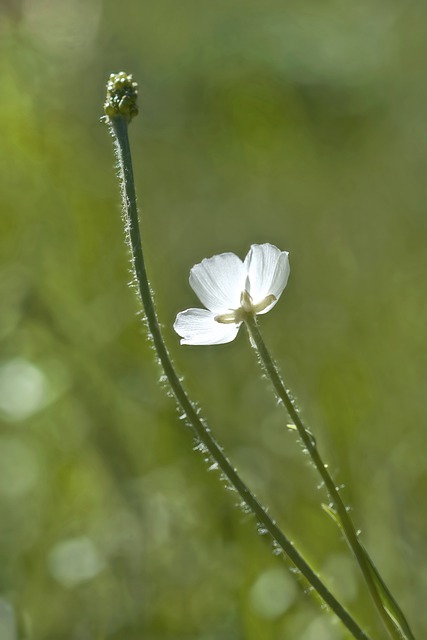
- Common Name: Ranunculus aconitifolius
- Description: A perennial with white, buttercup-like flowers and deeply divided leaves.
- Habitat: Prefers moist, well-drained soil and partial shade.
- Uses: Ideal for borders and woodland gardens.
White Camellia
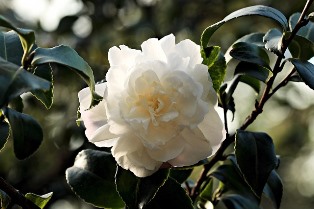
- Common Name: Camellia japonica
- Description: An evergreen shrub with glossy leaves and large, white, rose-like flowers.
- Habitat: Thrives in acidic, well-drained soil and partial shade.
- Uses: Popular in ornamental gardens and as cut flowers.
White Clover
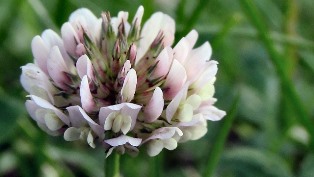
- Common Name: Trifolium repens
- Description: A low-growing perennial with trifoliate leaves and white, spherical flower heads.
- Habitat: Found in grasslands, lawns, and meadows.
- Uses: Used as ground cover and forage crop.
White Daisy
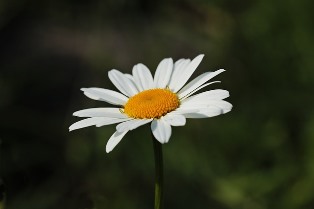
- Common Name: Leucanthemum vulgare
- Description: A perennial with white, daisy-like flowers with yellow centers.
- Habitat: Grows in well-drained soil and full sun.
- Uses: Common in meadows, borders, and as cut flowers.
White Egret Orchid

- Common Name: Habenaria radiata
- Description: An orchid with delicate, white flowers resembling a flying egret.
- Habitat: Prefers moist, acidic soil and partial shade.
- Uses: Cultivated for its unique, ornamental flowers.
White Fawn Lily

- Common Name: Erythronium oregonum
- Description: A perennial with nodding, white flowers and mottled leaves.
- Habitat: Found in moist, woodland areas.
- Uses: Ideal for woodland gardens and shaded borders.
White Forsythia
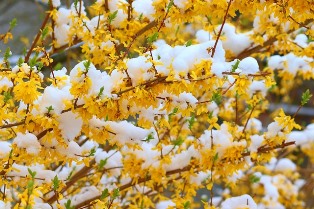
- Common Name: Abeliophyllum distichum
- Description: A deciduous shrub with fragrant, white to pale pink flowers.
- Habitat: Prefers well-drained soil and full sun to partial shade.
- Uses: Grown for early spring blooms and fragrant flowers.
White Frangipani

- Common Name: Plumeria alba
- Description: A tropical shrub or small tree with white, fragrant flowers and leathery leaves.
- Habitat: Thrives in well-drained soil and full sun.
- Uses: Popular in tropical gardens and as cut flowers.
White Heather
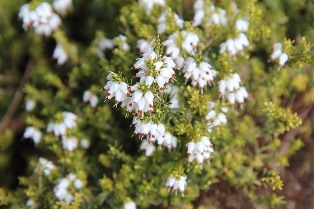
- Common Name: Calluna vulgaris
- Description: A low-growing evergreen shrub with white, bell-shaped flowers.
- Habitat: Prefers acidic, well-drained soil and full sun.
- Uses: Used in rock gardens, borders, and as ground cover.
White Jasmine
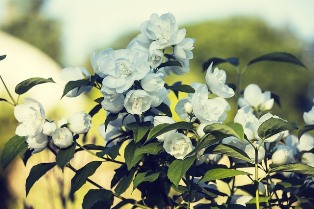
- Common Name: Jasminum officinale
- Description: A climbing shrub with fragrant, white flowers and pinnate leaves.
- Habitat: Grows in well-drained soil and full sun to partial shade.
- Uses: Cultivated for its fragrant flowers and as a climbing plant.
White Lilac

- Common Name: Syringa vulgaris
- Description: A deciduous shrub with large clusters of fragrant, white flowers.
- Habitat: Prefers well-drained soil and full sun.
- Uses: Grown for its ornamental flowers and fragrance.
White Lily

- Common Name: Lilium candidum
- Description: A perennial with large, fragrant, trumpet-shaped white flowers.
- Habitat: Thrives in well-drained soil and full sun to partial shade.
- Uses: Popular in gardens and as cut flowers.
White Lotus
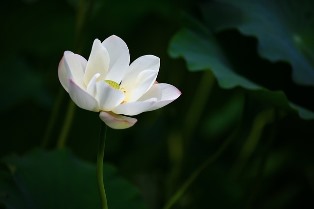
- Common Name: Nelumbo nucifera
- Description: An aquatic plant with large, white flowers and broad, floating leaves.
- Habitat: Grows in still or slow-moving freshwater bodies.
- Uses: Essential for water gardens and ponds, providing ornamental value.
White Mariposa Lily
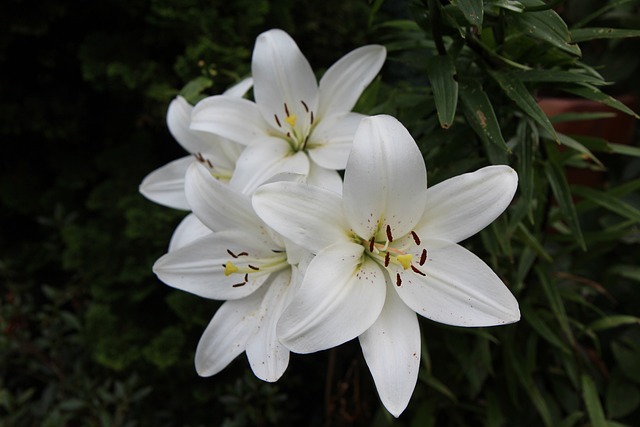
- Common Name: Calochortus venustus
- Description: A perennial with delicate, white, butterfly-like flowers.
- Habitat: Found in dry, open woodlands and grasslands.
- Uses: Suitable for rock gardens and naturalized areas.
White Mullein

- Common Name: Verbascum thapsus
- Description: A biennial with tall spikes of white, woolly flowers.
- Habitat: Prefers well-drained soil and full sun.
- Uses: Used in traditional medicine and ornamental gardens.
White Orchid

- Common Name: Phalaenopsis
- Description: An epiphytic orchid with long-lasting, white flowers and broad leaves.
- Habitat: Thrives in well-drained potting mix and bright, indirect light.
- Uses: Popular as houseplants and in floral arrangements.
White Periwinkle
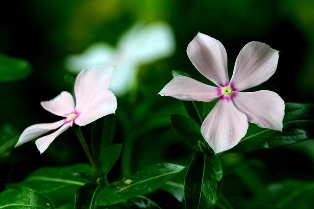
- Common Name: Vinca minor
- Description: A low-growing perennial with white, star-shaped flowers and glossy leaves.
- Habitat: Grows in well-drained soil and partial shade.
- Uses: Used as ground cover and in shaded gardens.
White Poppy
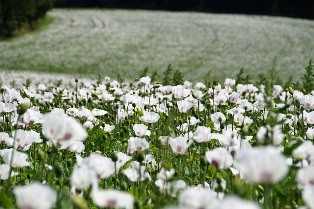
- Common Name: Papaver somniferum
- Description: An annual with large, white, crinkled flowers and bluish-green leaves.
- Habitat: Prefers well-drained soil and full sun.
- Uses: Grown for ornamental purposes and for its seeds.
White Primrose
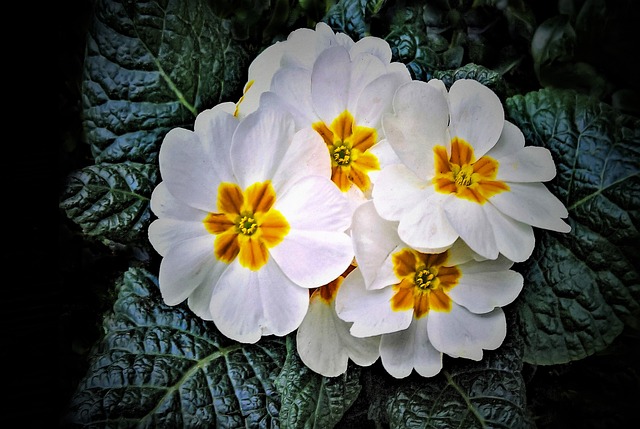
- Common Name: Primula vulgaris
- Description: A perennial with rosettes of leaves and clusters of white, yellow-centered flowers.
- Habitat: Thrives in moist, well-drained soil and partial shade.
- Uses: Suitable for borders, rock gardens, and woodland areas.
White Rose

- Common Name: Rosa
- Description: A deciduous shrub with fragrant, white flowers and thorny stems.
- Habitat: Prefers well-drained soil and full sun.
- Uses: Popular in gardens, as cut flowers, and in perfumes.
White Sage

- Common Name: Salvia apiana
- Description: An evergreen shrub with silvery leaves and white, tubular flowers.
- Habitat: Grows in well-drained soil and full sun.
- Uses: Used in traditional medicine and for smudging rituals.
White Snapdragon
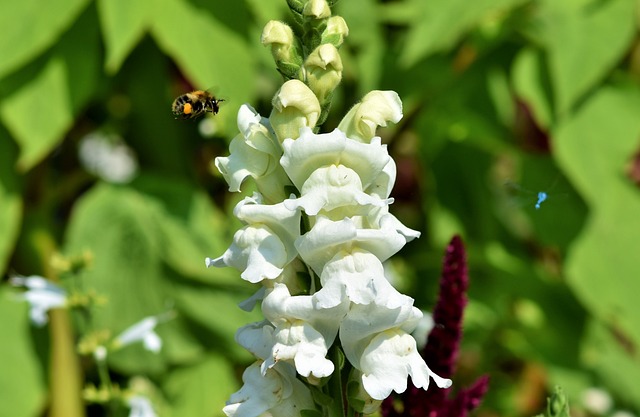
- Common Name: Antirrhinum majus
- Description: An annual or perennial with tall spikes of white, dragon-shaped flowers.
- Habitat: Prefers well-drained soil and full sun.
- Uses: Grown in borders, containers, and as cut flowers.
White Trillium

- Common Name: Trillium grandiflorum
- Description: A perennial with large, white, three-petaled flowers and broad leaves.
- Habitat: Found in moist, rich woodlands.
- Uses: Ideal for woodland gardens and shaded areas.
White Violets
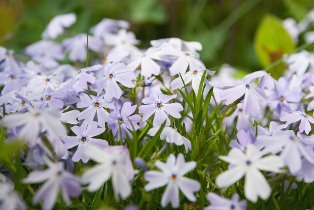
- Common Name: Viola
- Description: A perennial with small, white, fragrant flowers and heart-shaped leaves.
- Habitat: Thrives in well-drained soil and partial shade.
- Uses: Grown in rock gardens, borders, and as ground cover.
White Water Lily
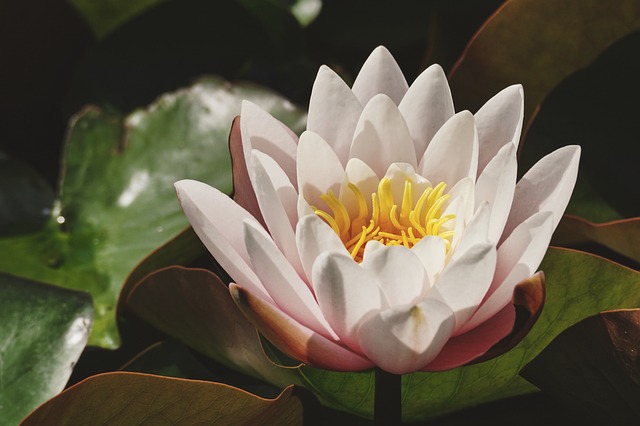
- Common Name: Nymphaea alba
- Description: An aquatic plant with large, floating leaves and white, fragrant flowers.
- Habitat: Grows in still or slow-moving freshwater bodies.
- Uses: Essential for water gardens and ponds, providing shade and habitat for aquatic life.
White Wild Indigo
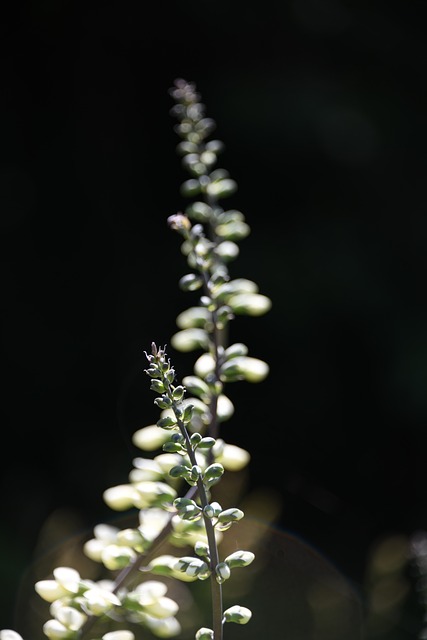
- Common Name: Baptisia alba
- Description: A perennial with tall spikes of white, pea-like flowers and blue-green foliage.
- Habitat: Prefers well-drained soil and full sun.
- Uses: Grown in prairie gardens and for its ornamental flowers.
White Willowherb
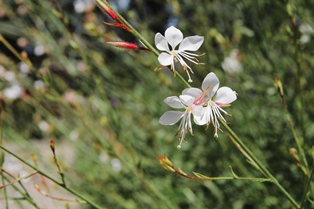
- Common Name: Epilobium ciliatum
- Description: A perennial with white, four-petaled flowers and lance-shaped leaves.
- Habitat: Found in wetlands, meadows, and along stream banks.
- Uses: Suitable for naturalized gardens and wetland areas.
White Windflower

- Common Name: Anemone nemorosa
- Description: A perennial with white, star-shaped flowers and divided leaves.
- Habitat: Thrives in moist, rich woodlands and shaded areas.
- Uses: Ideal for woodland gardens and shaded borders.
Whorled Milkweed
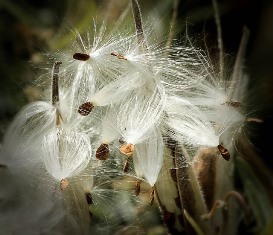
- Common Name: Asclepias verticillata
- Description: A perennial with clusters of small, white flowers and narrow leaves arranged in whorls.
- Habitat: Prefers well-drained soil and full sun.
- Uses: Grown in butterfly gardens and for its ornamental value.
Whorled Tickseed

- Common Name: Coreopsis verticillata
- Description: A perennial with yellow, daisy-like flowers and finely divided, whorled leaves.
- Habitat: Thrives in well-drained soil and full sun.
- Uses: Suitable for borders, rock gardens, and as cut flowers.
Wild Anemone

- Common Name: Anemone
- Description: A perennial with various flower colors and divided leaves.
- Habitat: Found in woodlands, meadows, and along stream banks.
- Uses: Ideal for naturalized gardens and woodland areas.
Wild Aster

- Common Name: Symphyotrichum
- Description: A perennial with clusters of small, daisy-like flowers in various colors.
- Habitat: Grows in well-drained soil and full sun to partial shade.
- Uses: Suitable for borders, meadows, and as cut flowers.
Wild Bergamot
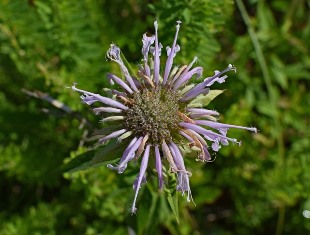
- Common Name: Monarda fistulosa
- Description: A perennial with clusters of lavender to pink flowers and aromatic leaves.
- Habitat: Prefers well-drained soil and full sun to partial shade.
- Uses: Grown in herb gardens and for attracting pollinators.
Wild Blue Phlox

- Common Name: Phlox divaricata
- Description: A perennial with clusters of blue, fragrant flowers and spreading habit.
- Habitat: Found in woodlands and shaded areas.
- Uses: Ideal for woodland gardens and shaded borders.
Wild Buckwheat

- Common Name: Eriogonum
- Description: A perennial with clusters of small, white to pink flowers and silvery foliage.
- Habitat: Grows in well-drained soil and full sun.
- Uses: Suitable for rock gardens and dry, sunny areas.
Wild Calla
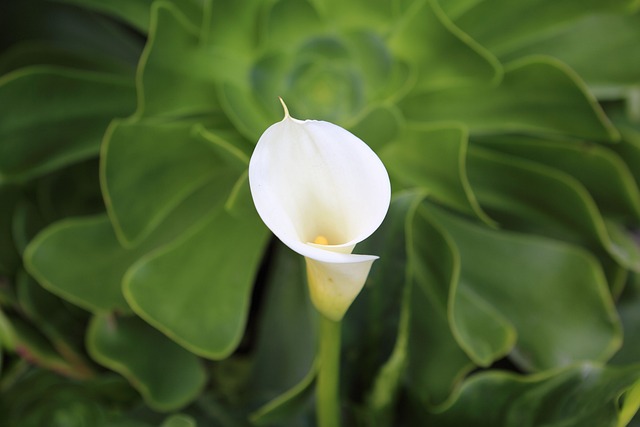
- Common Name: Calla palustris
- Description: An aquatic plant with white, hooded flowers and heart-shaped leaves.
- Habitat: Found in wetlands, bogs, and along stream banks.
- Uses: Ideal for water gardens and bog gardens.
Wild Candytuft

- Common Name: Iberis amara
- Description: An annual with clusters of white, fragrant flowers and narrow leaves.
- Habitat: Prefers well-drained soil and full sun.
- Uses: Grown in rock gardens, borders, and as cut flowers.
Wild Chervil

- Common Name: Anthriscus sylvestris
- Description: A biennial with umbels of small, white flowers and finely divided leaves.
- Habitat: Found in meadows, woodlands, and along roadsides.
- Uses: Suitable for naturalized gardens and wildflower meadows.
Wild Columbine
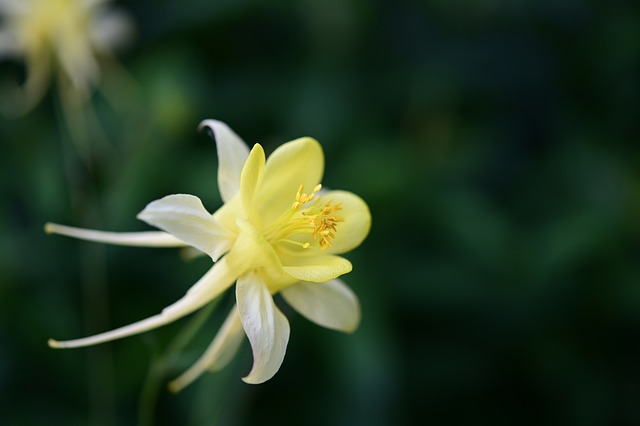
- Common Name: Aquilegia canadensis
- Description: A perennial with nodding, red and yellow flowers and fern-like foliage.
- Habitat: Thrives in woodlands, meadows, and rocky slopes.
- Uses: Ideal for naturalized gardens and wildflower meadows.
Wild Ginger
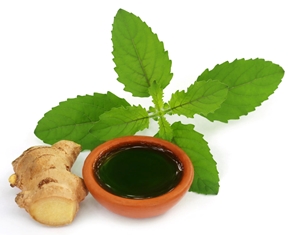
- Common Name: Asarum canadense
- Description: A low-growing perennial with heart-shaped leaves and small, brownish flowers.
- Habitat: Found in moist, rich woodlands.
- Uses: Grown as ground cover in shaded areas.
Wild Hyacinth
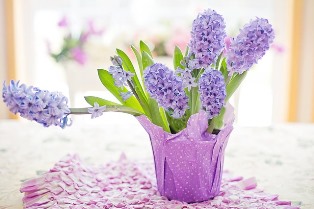
- Common Name: Camassia scilloides
- Description: A perennial with spikes of blue to purple flowers and grass-like leaves.
- Habitat: Prefers moist, well-drained soil and full sun to partial shade.
- Uses: Suitable for borders, meadows, and naturalized areas.
Wild Indigo
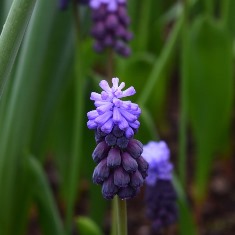
- Common Name: Baptisia
- Description: A perennial with tall spikes of blue, white, or yellow pea-like flowers.
- Habitat: Grows in well-drained soil and full sun.
- Uses: Grown in prairie gardens and for its ornamental flowers.
Wild Iris
- Common Name: Iris missouriensis
- Description: A perennial with blue to purple flowers and sword-like leaves.
- Habitat: Found in meadows, wetlands, and along stream banks.
- Uses: Ideal for naturalized gardens and wetland areas.
Wild Leek
- Common Name: Allium tricoccum
- Description: A perennial with broad leaves and clusters of white flowers.
- Habitat: Found in moist, rich woodlands.
- Uses: Cultivated for its edible leaves and bulbs.
Wild Lupine
- Common Name: Lupinus perennis
- Description: A perennial with spikes of blue to purple, pea-like flowers.
- Habitat: Prefers well-drained, sandy soil and full sun.
- Uses: Grown in prairie gardens and for attracting pollinators.
Wild Mint
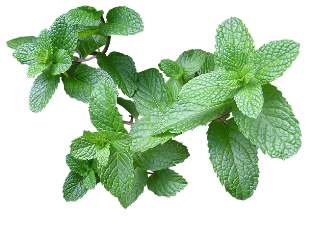
- Common Name: Mentha arvensis
- Description: A perennial with small, purple flowers and aromatic leaves.
- Habitat: Found in wetlands, meadows, and along stream banks.
- Uses: Grown for its culinary and medicinal uses.
Wild Morning Glory
- Common Name: Ipomoea purpurea
- Description: A climbing annual with heart-shaped leaves and trumpet-shaped flowers in various colors.
- Habitat: Prefers well-drained soil and full sun.
- Uses: Suitable for trellises, fences, and as ornamental climbers.
Wild Parsnip
- Common Name: Pastinaca sativa
- Description: A biennial with umbels of yellow flowers and pinnate leaves.
- Habitat: Found in meadows, roadsides, and disturbed areas.
- Uses: Grown for its edible roots, but contact with the plant can cause skin irritation.
Wild Petunia
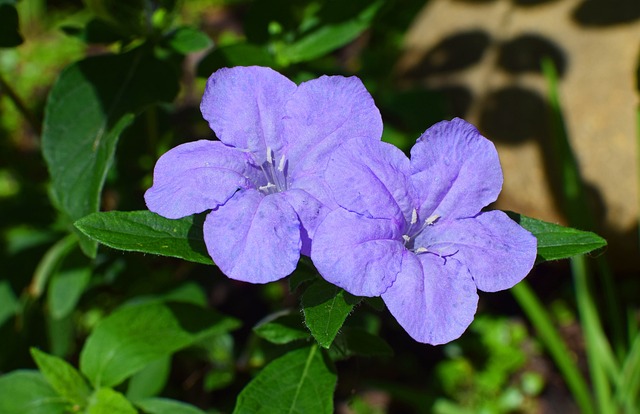
- Common Name: Ruellia humilis
- Description: A perennial with lavender to purple, funnel-shaped flowers and lance-shaped leaves.
- Habitat: Prefers well-drained soil and full sun to partial shade.
- Uses: Grown in rock gardens, borders, and wildflower meadows.
Wild Phlox
- Common Name: Phlox divaricata
- Description: A perennial with clusters of blue, fragrant flowers and spreading habit.
- Habitat: Found in woodlands and shaded areas.
- Uses: Ideal for woodland gardens and shaded borders.
Wild Pink
- Common Name: Silene caroliniana
- Description: A perennial with clusters of pink, star-shaped flowers and narrow leaves.
- Habitat: Thrives in well-drained soil and full sun to partial shade.
- Uses: Suitable for rock gardens, borders, and wildflower meadows.
Wild Plum
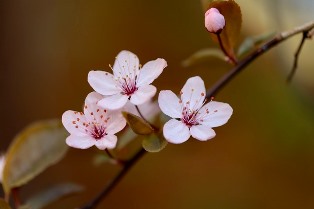
- Common Name: Prunus americana
- Description: A small tree or shrub with white, fragrant flowers and edible fruits.
- Habitat: Found in woodlands, meadows, and along stream banks.
- Uses: Grown for its ornamental flowers and edible fruits.
Wild Rose
- Common Name: Rosa
- Description: A deciduous shrub with fragrant flowers in various colors and thorny stems.
- Habitat: Grows in well-drained soil and full sun.
- Uses: Popular in gardens, as cut flowers, and in perfumes.
Wild Senna
- Common Name: Senna hebecarpa
- Description: A perennial with clusters of yellow, pea-like flowers and pinnate leaves.
- Habitat: Prefers well-drained soil and full sun to partial shade.
- Uses: Grown in prairie gardens and for attracting pollinators.
Wild Strawberry
- Common Name: Fragaria vesca
- Description: A low-growing perennial with white flowers and small, edible red fruits.
- Habitat: Found in woodlands, meadows, and along stream banks.
- Uses: Grown for its edible fruits and as ground cover.
Wild Sunflower
- Common Name: Helianthus annuus
- Description: An annual with large, yellow, daisy-like flowers and coarse leaves.
- Habitat: Prefers well-drained soil and full sun.
- Uses: Grown for ornamental purposes and for its edible seeds.
Wild Sweet William
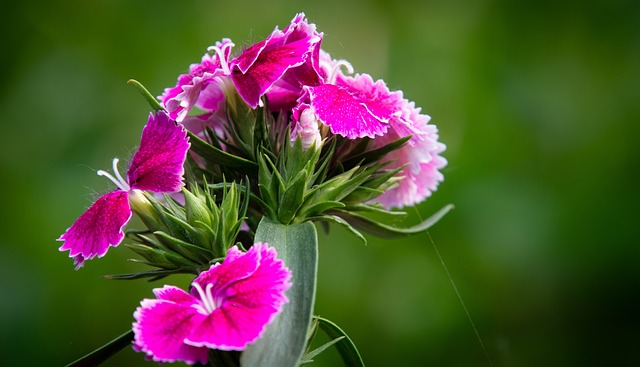
- Common Name: Phlox maculata
- Description: A perennial with clusters of pink, fragrant flowers and lance-shaped leaves.
- Habitat: Found in meadows, woodlands, and along stream banks.
- Uses: Ideal for borders, wildflower meadows, and cut flowers.
Wild Thyme
- Common Name: Thymus serpyllum
- Description: A low-growing perennial with small, purple flowers and aromatic leaves.
- Habitat: Thrives in well-drained soil and full sun.
- Uses: Grown for its culinary uses and as ground cover.
Wild Violets
- Common Name: Viola
- Description: A perennial with small, fragrant flowers in various colors and heart-shaped leaves.
- Habitat: Thrives in well-drained soil and partial shade.
- Uses: Grown in rock gardens, borders, and as ground cover.
Wildflower
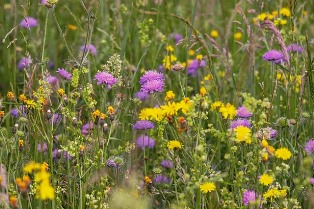
- Common Name: Various
- Description: A diverse group of flowering plants that grow naturally in the wild.
- Habitat: Found in meadows, woodlands, and various natural habitats.
- Uses: Ideal for naturalized gardens, meadows, and attracting pollinators.
Winter Aconite

- Common Name: Eranthis hyemalis
- Description: A perennial with yellow, cup-shaped flowers and divided leaves.
- Habitat: Thrives in well-drained soil and partial shade.
- Uses: Grown for early spring blooms and in woodland gardens.
Winter Cherry
- Common Name: Solanum pseudocapsicum
- Description: A small shrub with white flowers and bright red, cherry-like fruits.
- Habitat: Prefers well-drained soil and full sun.
- Uses: Grown as an ornamental plant, but the fruits are toxic.
Winter Jasmine
- Common Name: Jasminum nudiflorum
- Description: A deciduous shrub with bright yellow, star-shaped flowers.
- Habitat: Thrives in well-drained soil and full sun to partial shade.
- Uses: Grown for winter blooms and as a climbing plant.
Winter Rose
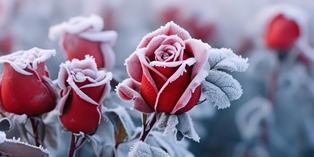
- Common Name: Helleborus niger
- Description: A perennial with large, white to pink, cup-shaped flowers.
- Habitat: Prefers moist, well-drained soil and partial shade.
- Uses: Grown for winter blooms and in shaded gardens.
Winterberry
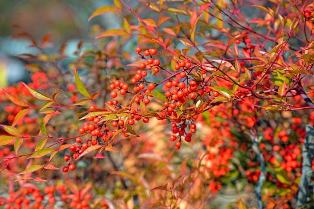
- Common Name: Ilex verticillata
- Description: A deciduous shrub with bright red berries and glossy green leaves.
- Habitat: Found in wetlands, meadows, and along stream banks.
- Uses: Grown for ornamental berries and in winter gardens.
Wintergreen

- Common Name: Gaultheria procumbens
- Description: A low-growing evergreen shrub with white flowers and red berries.
- Habitat: Thrives in acidic, well-drained soil and partial shade.
- Uses: Grown as ground cover and for its aromatic leaves.
Witch Hazel

- Common Name: Hamamelis virginiana
- Description: A deciduous shrub with yellow, strap-like flowers and fragrant leaves.
- Habitat: Prefers well-drained soil and partial shade.
- Uses: Grown for fall and winter blooms and in medicinal gardens.
Wisteria

- Common Name: Wisteria
- Description: A climbing vine with cascading clusters of purple to white, fragrant flowers.
- Habitat: Thrives in well-drained soil and full sun.
- Uses: Grown on trellises, arbors, and as ornamental climbers.
Wood Anemone

- Common Name: Anemone nemorosa
- Description: A perennial with white, star-shaped flowers and divided leaves.
- Habitat: Found in moist, rich woodlands and shaded areas.
- Uses: Ideal for woodland gardens and shaded borders.
Wood Betony
- Common Name: Stachys officinalis
- Description: A perennial with spikes of pink to purple flowers and heart-shaped leaves.
- Habitat: Thrives in well-drained soil and full sun to partial shade.
- Uses: Grown in herb gardens and for attracting pollinators.
Wood Lily
- Common Name: Lilium philadelphicum
- Description: A perennial with orange, bell-shaped flowers and narrow leaves.
- Habitat: Found in meadows, woodlands, and along stream banks.
- Uses: Grown in naturalized gardens and wildflower meadows.
Wood Sage
- Common Name: Teucrium scorodonia
- Description: A perennial with spikes of yellow-green flowers and aromatic leaves.
- Habitat: Prefers well-drained soil and full sun to partial shade.
- Uses: Grown in herb gardens and for its ornamental value.
Wood Sorrel
- Common Name: Oxalis
- Description: A perennial with clover-like leaves and small, white to pink flowers.
- Habitat: Found in woodlands, meadows, and along stream banks.
- Uses: Suitable for rock gardens, borders, and shaded areas.
Woolly Blue Curls
- Common Name: Trichostema lanatum
- Description: A perennial with clusters of blue, woolly flowers and aromatic leaves.
- Habitat: Grows in well-drained soil and full sun.
- Uses: Grown in rock gardens and for its ornamental value.
Woolly Thyme
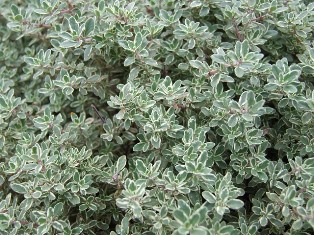
- Common Name: Thymus pseudolanuginosus
- Description: A low-growing perennial with woolly, gray-green leaves and pink flowers.
- Habitat: Thrives in well-drained soil and full sun.
- Uses: Grown as ground cover and for its aromatic leaves.
Wormwood
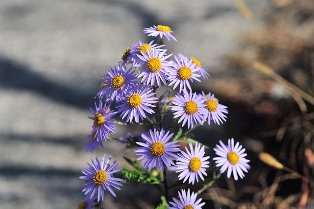
- Common Name: Artemisia absinthium
- Description: A perennial with silvery, aromatic leaves and small, yellow flowers.
- Habitat: Prefers well-drained soil and full sun.
- Uses: Grown in herb gardens and for its medicinal uses.
Wreath Goldenrod
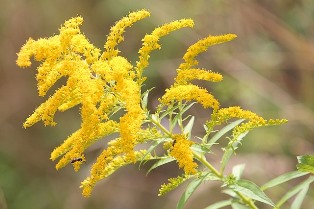
- Common Name: Solidago caesia
- Description: A perennial with arching stems of yellow flowers and narrow leaves.
- Habitat: Found in woodlands, meadows, and along stream banks.
- Uses: Grown in wildflower meadows and for attracting pollinators.
Wrinkled-leaf Goldenrod
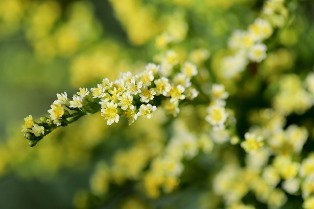
- Common Name: Solidago rugosa
- Description: A perennial with clusters of yellow flowers and wrinkled leaves.
- Habitat: Prefers well-drained soil and full sun.
- Uses: Grown in borders, meadows, and for attracting pollinators.
Wych Elm
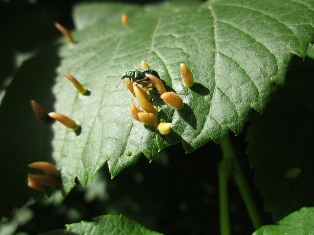
- Common Name: Ulmus glabra
- Description: A deciduous tree with broad leaves and clusters of small, green flowers.
- Habitat: Found in woodlands, meadows, and along stream banks.
- Uses: Grown for its ornamental value and shade.

